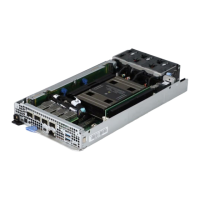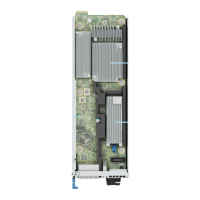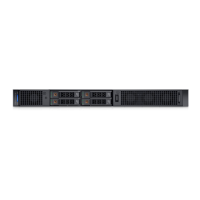Table 48. System Profile Settings details (continued)
Option Description
Monitor/Mwait Enables the Monitor/Mwait instructions in the processor. This option is set to Enabled for all
system profiles, except Custom by default.
NOTE: This option can be disabled when System Profile is set to Custom.
NOTE: When C States is set to Enabled in the Custom mode, changing the Monitor/
Mwait setting does not impact the system power or performance.
Workload Profile This option allows the user to specify the targeted workload of a server. It allows
optimization of performance based on the workload type. This option is set to Not
Configured by default.
CPU Interconnect Bus Link
Power Management
Enables or disables the CPU Interconnect Bus Link Power Management. This option is set to
Enabled by default.
PCI ASPM L1 Link Power
Management
Enables or disables the PCI ASPM L1 Link Power Management. This option is set to
Enabled by default.
System Security
To view the System Security screen, power on the system, press F2, and click System Setup Main Menu > System BIOS >
System Security.
Table 49. System Security details
Option Description
CPU AES-NI Improves the speed of applications by performing encryption and decryption by using
the Advanced Encryption Standard Instruction Set (AES-NI). This option is set to
Enabled by default.
System Password Sets the system password. This option is set to Enabled by default and is read-only if
the password jumper is not installed in the system.
Setup Password Sets the setup password. This option is read-only if the password jumper is not installed
in the system.
Password Status Locks the system password. This option is set to Unlocked by default.
TPM Information Indicates the type of Trusted Platform Module, if present.
Table 50. TPM 2.0 security information
Option Description
TPM Information
TPM Security
NOTE: The TPM menu is available only when the TPM module is installed.
Enables you to control the reporting mode of the TPM. When set to Off, the presence of the TPM is
not reported to the OS. When set to On, the presence of the TPM is reported to the OS. The TPM
Security option is set to Off by default.
When TPM 2.0 is installed, the TPM Security option is set to On or Off. This option is set to Off by
default.
TPM Information Indicates the type of Trusted Platform Module, if present.
TPM Firmware Indicates the firmware version of the TPM.
TPM Hierarcy Enables, disables, or clears the storage and endorsement hierarchies. When set to Enabled, the storage
and endorsement hierarchies can be used.
When set to Disabled, the storage and endorsement hierarchies cannot be used.
48 Pre-operating system management applications

